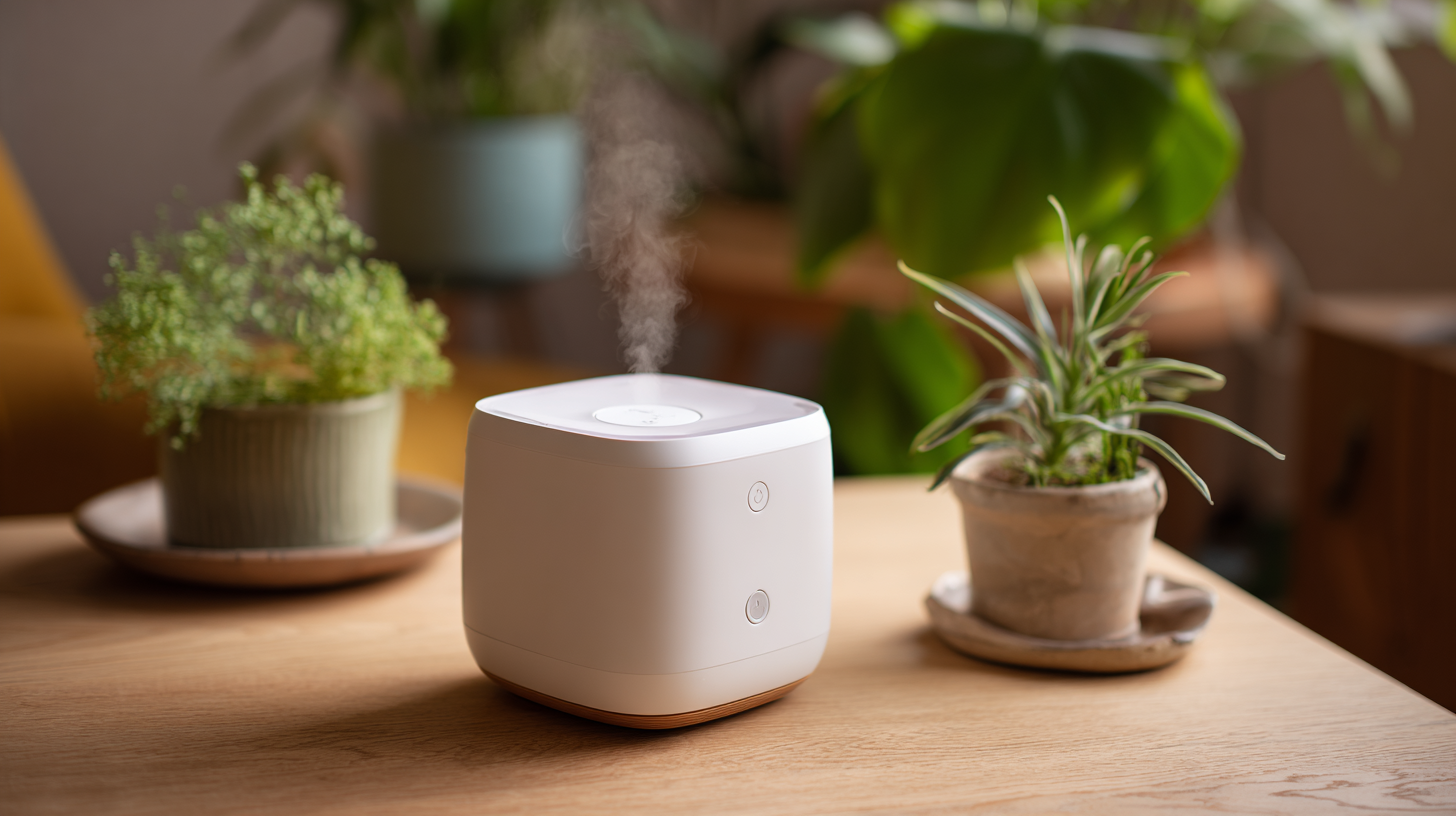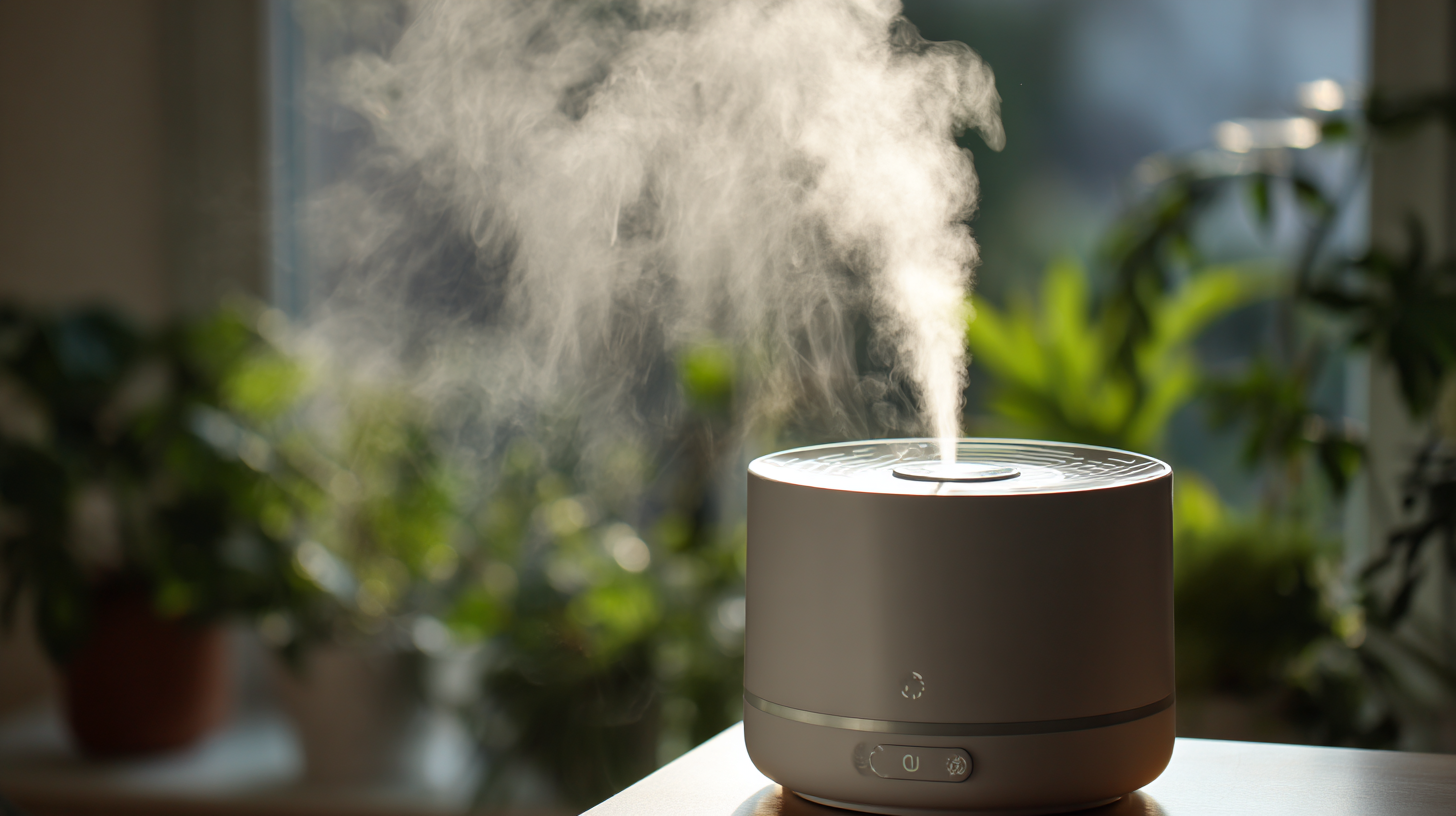The humidifier parts market is poised for significant growth in the coming years, driven by rising consumer awareness about health and wellness, as well as increased urbanization and changing climatic conditions. According to a recent report by Grand View Research, the global humidifier market size is expected to reach USD 5.7 billion by 2025, with a substantial portion attributed to the demand for high-quality humidifier parts that enhance efficiency and performance.

As consumers increasingly prioritize indoor air quality, the demand for advanced humidifier components, particularly those sourced from reputable manufacturers in countries like China, is surging. This trend presents both challenges and opportunities for industry players as they navigate evolving market dynamics. Understanding these trends and predictions for 2025 will be crucial for manufacturers and suppliers aiming to stay competitive in the vibrant humidifier parts market.
The global demand for humidifier parts is poised for significant growth as we approach 2025. According to a recent report by Grand View Research, the humidifier market is expected to reach USD 3.7 billion by that year, reflecting a compound annual growth rate (CAGR) of 7.5%. This surge is driven by a growing awareness of indoor air quality, particularly in urban environments where pollution levels are high, ultimately increasing the necessity for humidifiers.
Key markets to watch include North America and Asia-Pacific, which together hold a substantial share of the humidifier parts market. The increasing number of households and commercial spaces equipped with HVAC systems in these regions is anticipated to boost the demand for replacement parts. Additionally, the rising trend of smart home technology is expected to influence consumer purchasing decisions, as users seek compatible and efficient humidifier components that can integrate with their home automation systems.
**Tip:** When selecting humidifier parts, consider the compatibility with your existing units to ensure optimal performance. Additionally, investing in high-quality components can extend the lifespan of your humidifier, providing better moisture control and energy efficiency.
**Tip:** Keep an eye on new technological advancements in humidifier designs. Features such as app connectivity or UV sanitation can enhance your experience and offer improved air quality benefits.
As we look toward 2025, innovations in humidifier technology are set to redefine user experience and improve air quality across various settings. The global humidifier market, valued at approximately $2.6 billion in 2020, is projected to reach about $4.1 billion by 2025, reflecting a compound annual growth rate (CAGR) of around 9.6% (Source: Market Research Future). This remarkable growth signals an increasing consumer awareness of the benefits of maintaining optimal humidity levels, not just for comfort, but also for health.
One of the most anticipated advancements is the integration of smart technology into humidifiers. With the rise of IoT devices, consumers can expect models equipped with features like remote control via smartphone apps, real-time air quality monitoring, and automatic humidity adjustments based on environmental sensors. According to a report by Grand View Research, smart humidifiers are expected to dominate the market share by 2025, driven by their ease of use and enhanced functionality that promotes energy efficiency and user convenience. These innovations will not only enhance consumer satisfaction but are also expected to reduce energy consumption, catering to the growing trend of eco-friendly household solutions.

As the humidifier parts market evolves, sustainability in manufacturing is becoming a crucial focus for both consumers and manufacturers. The shift towards eco-friendly components not only addresses environmental concerns but also appeals to a growing demographic that values sustainability. By adopting materials that are recyclable or biodegradable, manufacturers can significantly reduce their carbon footprint while still meeting quality standards.
Tips for consumers looking for eco-friendly humidifier parts include checking for certifications that indicate sustainable practices, such as Energy Star ratings for energy efficiency and labels that signify the use of biodegradable materials. Additionally, consider brands that disclose their sourcing and manufacturing processes, as transparency is key in choosing truly sustainable products.
Moreover, businesses in the humidifier parts industry should prioritize innovation in sustainable design. Investing in research and development that explores alternative materials such as bioplastics or upcycled materials can set these companies apart in a competitive market. Collaborating with environmentally conscious suppliers can also enhance a brand's reputation and contribute to a healthier planet.
The humidifier parts market is poised for significant transformation by 2025, but potential challenges in the supply chain must be navigated carefully. According to a recent market analysis by Grand View Research, the global humidifier market is anticipated to grow at a CAGR of 5.4% from 2020 to 2027, yet the supply chain faces multifaceted risks. Disruptions in sourcing quality components, fluctuations in raw material prices, and logistical inefficiencies can hinder the seamless delivery of humidifier parts, ultimately impacting product availability and pricing.
To mitigate these challenges, manufacturers should adopt proactive strategies. Implementing advanced forecasting techniques can better predict demand fluctuations, allowing for optimal inventory management. Additionally, investing in local sourcing options can reduce dependency on international supply chains, enhancing resilience against global disruptions.
**Tips:** Consider increasing partnerships with multiple suppliers to diversify your sourcing options. Staying informed about technological advancements can also aid in integrating more efficient production methods, helping to offset rising costs. Regularly reviewing supply chain performance metrics will enable companies to identify bottlenecks and respond swiftly to any emerging risks.
| Dimension | 2023 Data | 2024 Predictions | 2025 Forecast |
|---|---|---|---|
| Market Value (in Billion $) | 2.5 | 2.8 | 3.1 |
| Annual Growth Rate (%) | 4.6 | 5.2 | 6.0 |
| Key Components Market Share (%) | Heating Element: 35, Fan: 25, Water Tank: 20, Others: 20 | Heating Element: 34, Fan: 26, Water Tank: 20, Others: 20 | Heating Element: 33, Fan: 27, Water Tank: 20, Others: 20 |
| Supply Chain Disruptions (%) | 15 | 10 | 8 |
| Consumer Awareness (%) | 50 | 60 | 70 |
The global humidifier parts market is poised for significant growth, with Chinese manufacturers playing a crucial role in shaping its future. In 2024, global humidifier sales reached USD 3.58 billion, and projections indicate an increase to USD 3.81 billion in 2025. This upward trend illustrates a compound annual growth rate (CAGR) of 6.4%, affirming the rising demand for humidifiers across both residential and commercial sectors. As the market expands, the contribution of Chinese small home appliance manufacturers is becoming increasingly vital, with many companies focusing on emerging overseas markets and enhancing localized production capabilities.
Tips for navigating the humidifier parts market include staying informed about the latest trends and forecasts, which suggest that the market size will escalate to USD 7.08 billion by 2035. Additionally, understanding the nuances of supply chain management can help businesses optimize their operations. Companies should consider collaborating with established Chinese manufacturers known for their robust production lines and cost-effectiveness, ensuring a reliable supply of quality parts.
